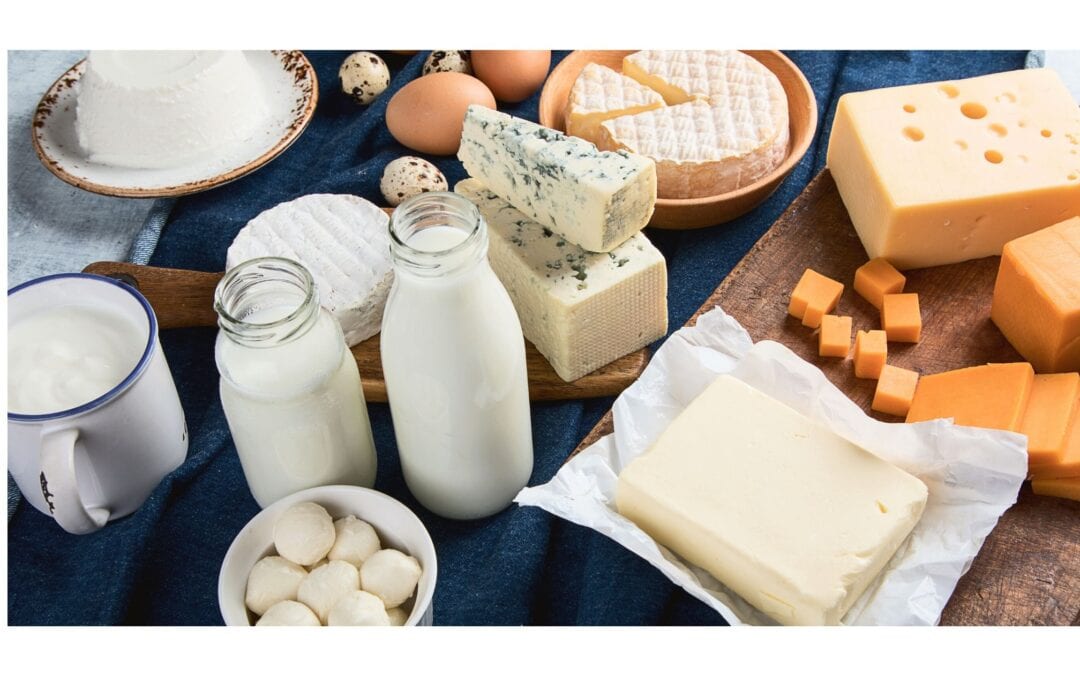The link between milk and breakouts
“Ditch the dairy” is a sweeping piece of diet advice often given to people with acne. Will removing this so-called “dietary villain” give you clear skin? Unfortunately, there’s no definitive “one size fits all” answer here. Yes, for some people it will, but for others, it won’t make much difference at all. Why?
Well, the dairy “devil” really is in the detail.
- How much do you have?
- What type do you have? Is it fermented, processed, full fat or skim?
- What is the quality and processing of the dairy? A1 or A2, organic, homogenised ** In Australia, all milk sold for human consumption is legally required to be pasteurised.
- What is your genetic tolerance for dairy? Those with Northern European ancestry generally digest milk better than those of the Middle East and Asian descent.
All these things to consider…why can’t there be a SIMPLE answer?
How does dairy potentially contribute to acne?
There are three ways dairy might contribute to skin breakouts.
Hormonal
Cows lactate to feed their calves. As such, dairy milk contains hormones to support baby bovine growth. It naturally contains testosterone and androstenedione, and these can stimulate the human hormone, Insulin-like Growth Factor-1 (IGF-1). 1
IGF-1 amplifies the action of insulin up to fivefold. The knock-on effects of high insulin are higher sebum and androgen production. Also, the skin cells in the sebaceous gland increase their turnover (also known as follicular keratinisation). This results in an increased likelihood of blockages and inflammation.
IGF-1 is raised during human puberty, so a high dairy diet, plus being a teenager creates a perfect storm for pimples.2
Full fat yoghurt is less likely to trigger these responses as the probiotic bacteria reduce IGF-1 during fermentation. 1
The whey, or protein component of milk also directly stimulates insulin release by the pancreas. This effect is not present in plant-based protein powders.
Epigenetic nutrient signalling
Recent research is showing how processed dairy milk may change the signalling of genes which control androgen skin receptors and sebum production. The effect seems to higher in homogenised and skim milk. 3
Some people also have a natural genetic polymorphism of the IGF-1 gene increasing their susceptibility to acne. 2
Inflammation
The milk sugar, lactose, also contributes to a high glycaemic index, and these kinds of foods add to the inflammatory burden on the body. This can be compounded by the addition of other sugars to dairy-based products such as ice-cream and low-fat yoghurts. Once we pass infanthood in there is a sharp decline in our production of lactase, the enzyme that helps us digest lactose. Undigested lactose creates gut inflammation, bloating and loose stools.
What does the research have to say?
Acne vulgaris is a disease of modern civilisation and appears to have emerged in step with increased consumption of high glycaemic index foods. Compared to the approximate 80% of adolescents in the Western World who experience acne, non-Western populations are observed to be relatively acne-free. 4
A study done in Malaysia showed dairy consumption increased the incidence of acne by up to 2.5 times and was particularly associated with consumption of chocolate of 2-6 times a week or more than 500mL of milk per day. 1
A 2018 systematic review which combined the results of 14 studies and used 78,529 people, showed that any intake of dairy compared to a dairy free-diet increased the risk of acne. Like the previous study, the risk increased with the daily volume consumed. Skim milk and low-fat dairy had a higher risk than full-fat versions. 2
Is dairy causing my acne?
- Are genetics involved?
- Do you have a family history of acne? You may have the polymorphism of the IGF-1 gene.
- Do you come from an ethnic background which didn’t have dairy as a big part of the traditional diet? In these cases, low or no dairy could be a good idea.
- What’s your daily dairy consumption? Research shows there is a link between volume and acne risk. To reduce the amount of dairy, consider the following:
- Have a sprinkle of feta on your salad and not a whole cheese platter for dinner. Cook homemade pizza and go easy on the cheese.
- Ice-cream should be a once a week treat and not every night.
- Swap the milk chocolate for 70% plus dark chocolate.
- Choose plant-based protein powder, not whey.
- Switch to a short-black coffee. You can swap to plant mylks, but many of these have up to 2 teaspoons of added sugar per 200mL.
- What type of dairy are you having?
- Fermented dairy like yoghurt, cheese and full fat, unhomogenised milk is less reactive forms. There is some research to suggest A2 milk might also be less inflammatory for the skin.
- How old are you?
- Adolescents have naturally higher levels of IGF-1, so more of this from dairy is only adding fuel to the fire. Once you are past adolescence, you may be able to tolerate small amounts of quality dairy products without breakouts.
- How do you feel when you eat dairy?
- If you know, dairy makes you bloated, gassy and causes loose stools dairy is not for you and is probably contributing to general inflammation.
Many people use dairy to support their daily calcium requirements. However, there are many other food sources of calcium. Here’s a handy dairy-free calcium guide. If you quit dairy, make sure you’re getting plenty of calcium from these different sources.
I quit dairy, but my skin didn’t improve, why?
Although dairy has been made out to the be dietary acne villain, removing it won’t necessarily make the pimples vanish. It would help if you also looked at how inflammatory your overall diet is. Only removing dairy and leaving in refined sugars, deep-fried and processed foods will still raise your inflammatory burden.
You’ll also need to remove dairy for 4-6 weeks to get an accurate assessment on the effects it may have for you.
The overall shape of the diet you eat 95% of the time will be a more significant determining factor than a single food.
I’d love to hear your experiences with acne and dairy. Did removing milk products from your diet improve your skin? Leave me a comment below.
If you liked this, you might also enjoy:
References
- Sundra T, Suppiah S, Kumar T, et al. Acne vulgaris and its association with dietary intake : a Malaysian perspective. Asia Pac J Clin Nutr. 2018;27(January 2017):1141-1145. doi:10.6133/apjcn.072018.01
- Kanters JK, Ellervik C. Dairy Intake and Acne Vulgaris: A Systematic Review and Meta-Analysis of 78,529 Children, Adolescents, and Young Adults. Nutrients. 2018;10(1049):1-13. doi:10.3390/nu10081049
- Melnik BC. Milk disrupts p53 and DNMT1 , the guardians of the genome : implications for acne vulgaris and prostate cancer. Nutr Metab. 2017;14(55):1-12. doi:10.1186/s12986-017-0212-4
- Melnik BC. Evidence for Acne-Promoting Effects of Milk and Other Insulinotropic Dairy Products. 2005:27-31.

Need help with
Norelle Hentschel is an experienced Naturopath with a clinic in Stones Corner, South East Brisbane and also offers Telehealth consults Australia wide. She enjoys supporting her clients to reach their health goals.
Want more articles like this?
Join us at Your Skin Remedy – the monthly missive for healthy skin from the inside out. Practical, actionable, and informative. Your clear, glowing skin starts here.
PS. Your inbox real estate is precious. Your Skin Remedy is pitch and promo free. I promise. One email a month — that’s it.

